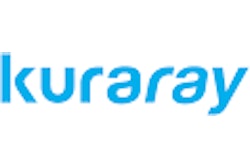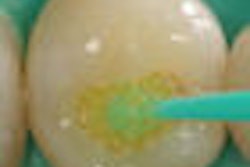Violins, cathedrals, waffle irons: they don't make 'em like they used to. To that list, Jeff Brucia, D.D.S., co-director of the Foundation for Advanced Continuing Education (FACE), would add dental adhesives.
"Apply the technique of the 1970s," Dr. Brucia told an audience of 400 at the recent ADA annual meeting. "It's not the coolest. It just works."
One goal of the seminar, titled "Restorative Materials Update 2008," was to review "new advancements" in restorative dentistry. But according to Dr. Brucia, there have been precious few advancements for the past few decades -- especially in bonding systems.
"There has not been an improvement," he said. "There has been a different mode of application." In fact, many products and techniques being used today are not as good as those Dr. Brucia's father used, he said. "He never had sensitivity. Why weren't his restorations falling off? Why are ours falling off today?"
Three adhesive makers contacted by DrBicuspid.com -- Ultradent, Bisco, and Kuraray America -- offered varied reactions to Dr. Brucia's observations: a Kuraray spokesperson disagreed, an Ultradent spokesperson declined to comment, and a Bisco spokesperson mostly agreed.
The problem with mixing
Dr. Brucia, who inherited his father's San Francisco practice and is a University of the Pacific assistant professor, has also been paid to lecture to some adhesive companies. But he said he's beholden to none -- and often contradicts them. "The companies don't like me," he said.
One reason is that he insists the art of bonding reached its zenith with what is now called the fourth generation. This system requires three bottles: an etch, a primer, and an adhesive.
The etch is phosphoric acid. The primer is a hydrophilic agent designed to bind well with dentin. The adhesive is a hydrophobic agent that binds well with porcelain and composite.
Examples include All-Bond 2 and 3 (Bisco), Bond-It (Pentron), OptiBond FL (Kerr), Syntac (Vivadent), Scotchbond Multi-Purpose Plus (3M), and PermaQuik (Ultradent). "They work," said Dr. Brucia. "They work. They work really, really, really well."
Subsequent systems have not shown the same bond strength, Dr. Brucia said, citing both his own lab tests and published studies.
Fifth-generation adhesive systems attempt to save a step by combining primer and adhesives in the same bottle. "How do you take something that loves water and put it together with something that hates water?" Dr. Brucia asked. "You make the product very acidic."
He compared the notion to combining shampoo and conditioner in one. Sure, it's more convenient, he said, but it doesn't work as well. "Give me a fifth-generation system and I have to concentrate like no tomorrow to make that stuff work well," he said. "If I make a mistake with this product, I get catastrophic results."
One problem, he said, is that this acidic hydrophilic bonding agent can cause an acid-base reaction when it comes in contact with a dual- or self-cured composite. Unless the composite is cured within two minutes of placement, this reaction can prevent it from ever curing. Another problem is that the acidic hydrophilic bonding agent creates osmotic blistering.
As evidence, Dr. Brucia cited research by Indiana University researchers (Operative Dentistry, May-June 2006, Vol. 31:3, pp. 346-353) that found that later-generation bonding systems were more water permeable.
To cope with these problems, various adhesive companies introduced new materials to add to the restorations in the late 1990s, Dr. Brucia said, but none worked. Later innovations haven't helped much either, he added. "If you go down to the exhibit floor, they'll tell you, 'We've fixed it.' Well, why did [they] break it in the first place?"
More recently, adhesive companies began raising the pH in their products. "I shook my head," said Dr. Brucia. "I said, 'Wait. We needed the acidity to keep the hydrophilic and the hydrophobic products together." And sure enough, research showed that the new products weren't very stable.
Lack of stability particularly plagues the seventh-generation systems, in which etch, primer, and adhesive are all combined in a single bottle, he said, citing a study in the American Journal of Dentistry (April 2006, Vol. 19:2; pp. 111-114).
The single-bottle products are so unstable that they have to be kept chilled. "When we're doing a study, we call up the company and ask if we can get some of the product," Dr. Brucia said. "It arrives packed in ice." But adhesives makers often neglect to inform their customers of this problem. "When is the last time you bought a bonding agent and it came packed in ice?"
You might lose a finger
Another problem with the newer systems is that combining primer and adhesive or primer and etch results in primer being applied to enamel. Surpass (Apex Dental Materials) and All-Bond SE (Bisco) are the only newer-generation products Dr. Brucia has found that have no solvent in the adhesive. "I absolutely would never want primer on enamel," he said. "Dentin primer does nothing but get in your way."
The solvent in the primer doesn't allow adhesives to cure. With fourth-generation products, in which the primer, etch, and adhesive are separate, you can remove the solvent by air thinning the primer until the movement of fluid stops. "When you mix primer and adhesive together, no matter how good your technique is, 25% of what you have left is solvent," Dr. Brucia said.
Light also helps remove the solvent, he noted. "If you light assist the evaporation of your primer, your bond strength will routinely go up 20%. I have tested this for years. The added amount of time and heat will give you a much better adhesion," he said.
A problem with sixth-generation products (in which the primer and etch are in one bottle, the adhesive in another) is that the acids aren't as effective for etching, Dr. Brucia said. Five-amino salicylic acid, citric acid, and nitric acid are used because they neutralize themselves in the mouth, eliminating the need for rinsing.
But phosphoric acid is better for etching, Dr. Brucia said. "I use phosphoric acid on everything. If you were to take my phosphoric acid away from me, you might lose a finger."
The differences add up starkly in bench tests, he said. With his fourth-generation OptiBond, PermaQuik, Scotchbond and All-Bond, he can instantly achieve 40 megapascals (MPa) of bond strength, and 72 MPa after 24 hours. By contrast, with the newest products, he can only achieve 10-15 MPa.
As further evidence that fourth-generation products last longer, Dr. Brucia cited an article in Dental Materials (July 2000, Vol. 16:4, pp. 285-291) that found that the "three-step resin adhesive and the RMGIC [resin-modified glass ionomer cement) showed clinically acceptable retention rates, while a high failure rate was registered for the one-bottle adhesive."
"I would still rather have a 12-year-old bonding agent and a 20-year-old composite in my inventory than the newer systems today," Dr. Brucia concluded.
Not everyone agrees that bonding strength has declined with the newer systems. Junichi Ohtsuki, product manager for Kuraray America, acknowledged that seventh-generation adhesives "are not perfect yet." But he insisted that "The sixth generation is the best bonding agent for relieving sensitivity." The fourth generation, he said, "is similar in strength, but it's technique-sensitive."
Asked for evidence to back up his claims, Ohtsuki provided DrBicuspid.com with three articles from peer-reviewed journals. Of theses, one dealt only with the consequence of mistakes in technique. The other two actually supported Dr. Brucia's position. For example, a September 2005 review by Peumans et al in Dental Materials concluded that, compared to fourth generation systems, "The clinical effectiveness of two-step etch-and-rinse adhesives was less favorable, while an inefficient clinical performance was noted for the one-step self-etch adhesives" (September 2005, Vol. 21:9, pp. 864-881).
Ohtsuki also provided a symposium paper speculating on hypothetical advantages of "self-etch" (later than fourth-generation) adhesives. Finally, he supplied two articles from Gordon Christensen's CRA Newsletter, but only one (November/December 2003, Vol. 27:11/12, pp. 1-5) reported tests of a fourth-generation product: All-Bond 2 (Bisco). The anonymous authors gave this product a bond strength of 26.5 ± 6.3 MPa on enamel and 36.1 ± 4.9 MPa on dentin.
These researchers found several other recent-generation products stronger. They rated two fifth-generation products the highest in strength. Prime & Bond NT (Caulk/Dentsply) got the highest enamel bond strength rating (46.3 ± 9.8 MPa), while OptiBond Solo Plus SEP got the highest dentin bond strength rating (59.5 ± 6.9 MPa).
On the other hand, Douglas J. Brown, D.D.S., senior manager for clinical affairs at Bisco, acknowledged that the fourth-generation systems have clear advantages. "The evidence has shown that they are stronger and longer-lasting than the self-etches," he said.
The only advantages to the newest products -- particularly the one-step systems -- are speed and convenience. In some instances, such as placing a restoration in an impatient child, that speed might be worth the loss of durability, Dr. Brown argued.
And even Dr. Brucia acknowledged that in situations in which strength is not at a premium, the newest systems might be useful. Overall, though, he warned that many dentists would pay the price for taking the easy route.
"I'm too busy to have sensitivity," he said. "I'm too busy to have failures."



















